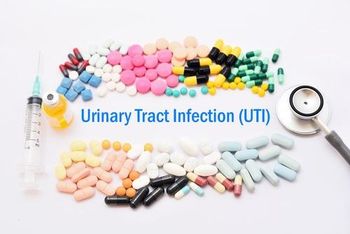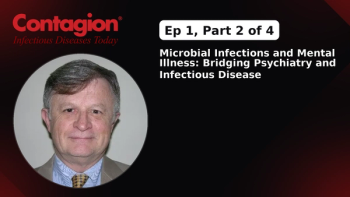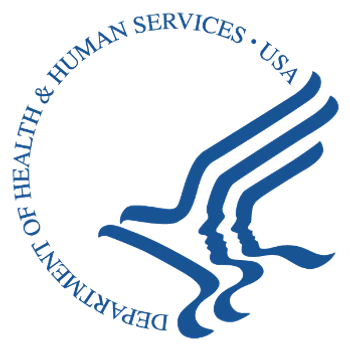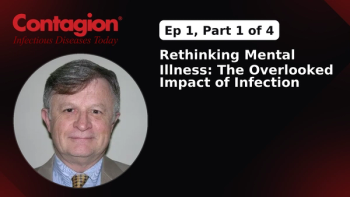
At MAD-ID 2025, William R Mikesell, PharmD, presented data showing 20% vs 16% treatment failure rates in doxycycline and minocycline groups.

At MAD-ID 2025, William R Mikesell, PharmD, presented data showing 20% vs 16% treatment failure rates in doxycycline and minocycline groups.

Christina Lee, PharmD, and Julia Donahue, PharmD, analyzed 533 encounters revealing a 27.1% readmission rate in immunocompromised patients versus 14.1% in non-immunocompromised patients.

Hydronidone demonstrated significant efficacy in liver fibrosis regression in CHB patients, meeting the primary endpoint in a phase 3 trial. The company plans to file regulatory applications in China and the US, aiming to expand the therapy's indications.

Long-acting lipoglycopeptides were as effective as daily standard-of-care antibiotics in step-down regimens for serious infections.

At MAD-ID, Dianne Nguyen, MD, shares Phase 3 data showing consistent tolerability of the microbiome therapy across high-risk patient populations

In a new study presented at MAD-ID, omadacycline was found to have an 86% clinical success rate across a wide-range of infections and pathogens in an immunocompromised population.

At MAD-ID, Marc Scheetz, PharmD, discusses how PK/PD modeling and AUC-based strategies offer safer, more precise antibiotic therapy.

Bacteria genetically engineered to express human chemokine to enhance wound healing demonstrates direct activity against MDR bacteria in-vitro.

Logan Brock, PharmD, presents data at MAD-ID, showing limited diagnostic yield from routine fungal cultures and delayed results compared with standard methods.

After the leaders of the NIH, FDA, and HHS made an announcement stating that both pregnant women and children were going to be taken off the COVID-19 immunization schedule, they decided to offer a new designation for the latter group, making it a shared decision between providers and patients.

At MAD-ID 2025, Kimberly Leuthner, PharmD, FIDSA, highlights the need for larger prospective studies amid limited current evidence.

The company's vaccine, mRNA-1283, becomes the first approval under the new federal guidelines.

At MAD-ID 2025, Jiye Park, PharmD, presents findings showing once-daily dosing is effective, with no added benefit from extended vancomycin use after antibiotics.

At MAD-ID 2025, Dakota Rorie, PharmD, highlights cost and access barriers to uptake of preferred CDI therapy.

At MAD-ID 2025, Rachel M. Kenney, PharmD, discusses treatment shifts, microbiome innovations, and pharmacists' roles in optimizing outcomes.

Despite the funding being terminated, the company said data from its phase 1/2 study of its investigational vaccine, mRNA-1018, demonstrated positive interim results.

Timmy Do, PharmD, BCIDP, BCPS, presents case series at MAD-ID 2025 on investigational therapies following tecovirimat failure.

At MAD-ID 2025, Cadhan McFadden presents data from a multidisciplinary ambulatory care project using PEN-FAST scoring and oral challenges to improve antibiotic access and accuracy.

A new study being presented at MAD-ID looked at this class of therapies vs oral penicillins and found the former to be non-inferior to the latter.

At MAD-ID 2025, Elizabeth Dodds Ashley, PharmD, MHS, explains how NHSN’s Antibiotic Resistance Option is shaping stewardship and clinical decision-making.

At MAD-ID, a study highlights how prescribing in these settings suggests a need for antimicrobial stewardship efforts.

At MAD-ID, Timothy Aungst, PharmD, outlines the role of artificial intelligence in clinical decision-making, curriculum design, and infectious disease practice.

If approved, Spero Therapeutics and GSK’s antibiotic, tebipenem HBr, could be the first oral carbapenem for US patients with complicated urinary tract infections (cUTIs).

The World Health Organization (WHO) says the previously predominant LP81 variant has been declining, and that the NB181 strain, which is a variant under monitoring, is increasing.

Ep 1, Part 2 of 4, insights from Robert Bransfield, MD's research on the immune system’s role in psychiatric disorders.

Following a positive safety review, Vaxart advances its needle-free, room-temperature stable oral vaccine candidate with government-backed funding and a year-long follow-up study.

In a joint announcement, the leaders of the NIH, HHS, and FDA, made comments about this CDC immunization removal.

Ep 1, Part 1 of 4: Robert Bransfield, MD, introduces his understanding of how infectious diseases may trigger or worsen psychiatric disorders through genetics, immune response, and environmental factors.

With this news, Sanofi's immunization becomes the only MenACWY vaccine that can help protect individuals 6 weeks of age and older, with no upper age limit.

TAXIS Pharmaceuticals announced it received a $2.9 million federal grant, which will allow the company to further advance its efforts with its dihydrofolate reductase inhibitors for the rapidly spreading and antibiotic-resistant strain of Neisseria gonorrhoeae.